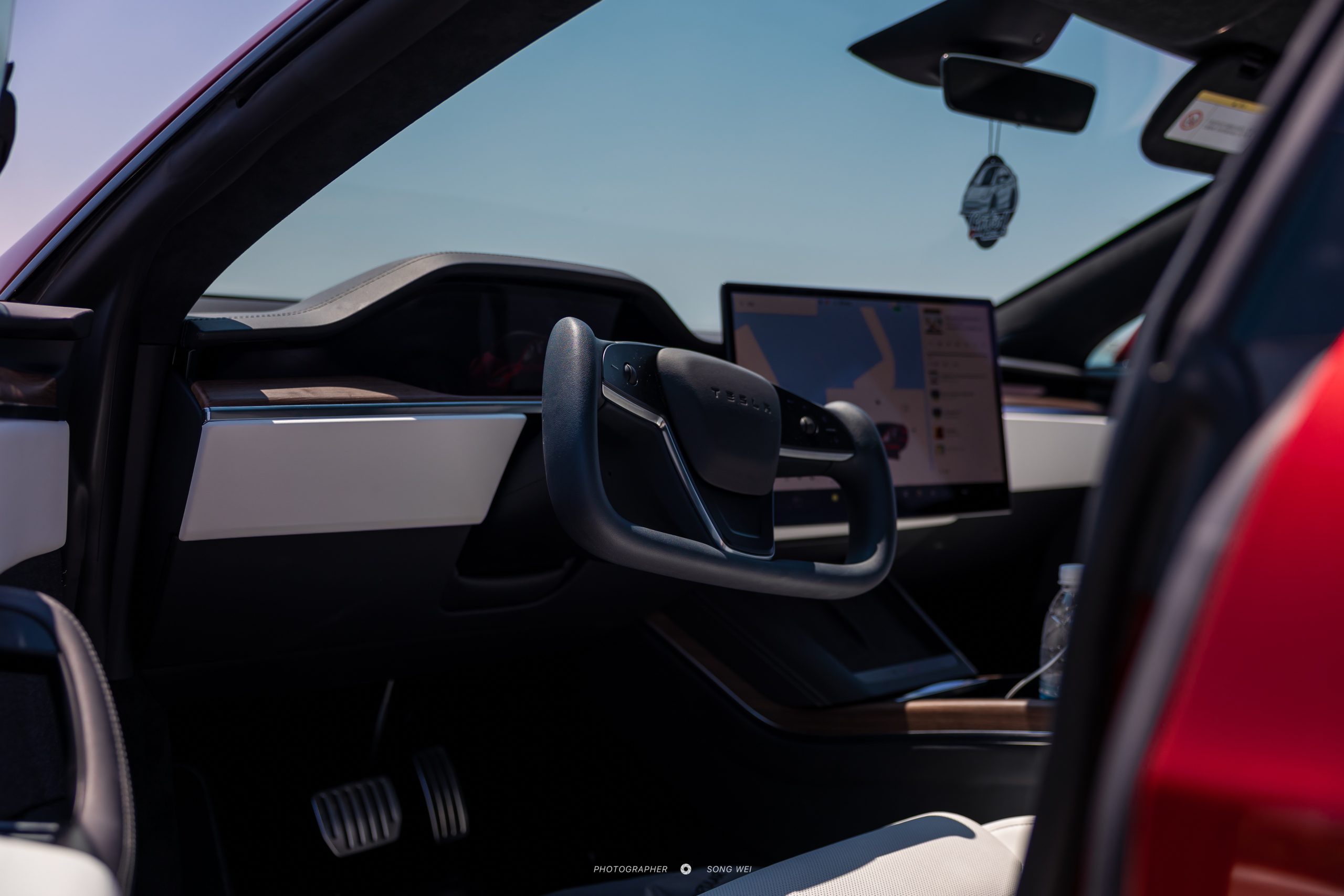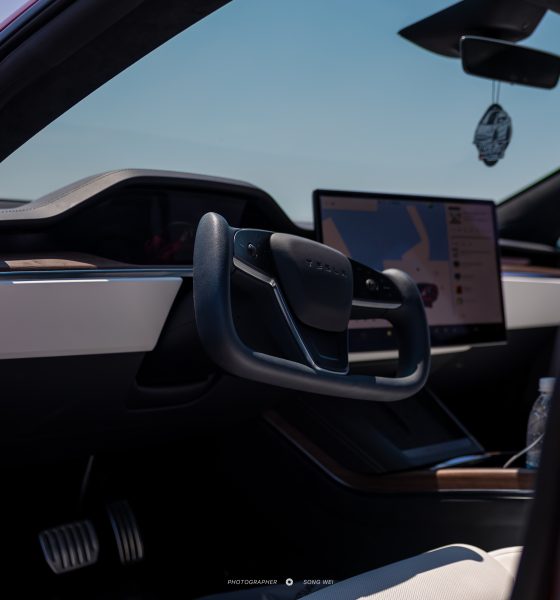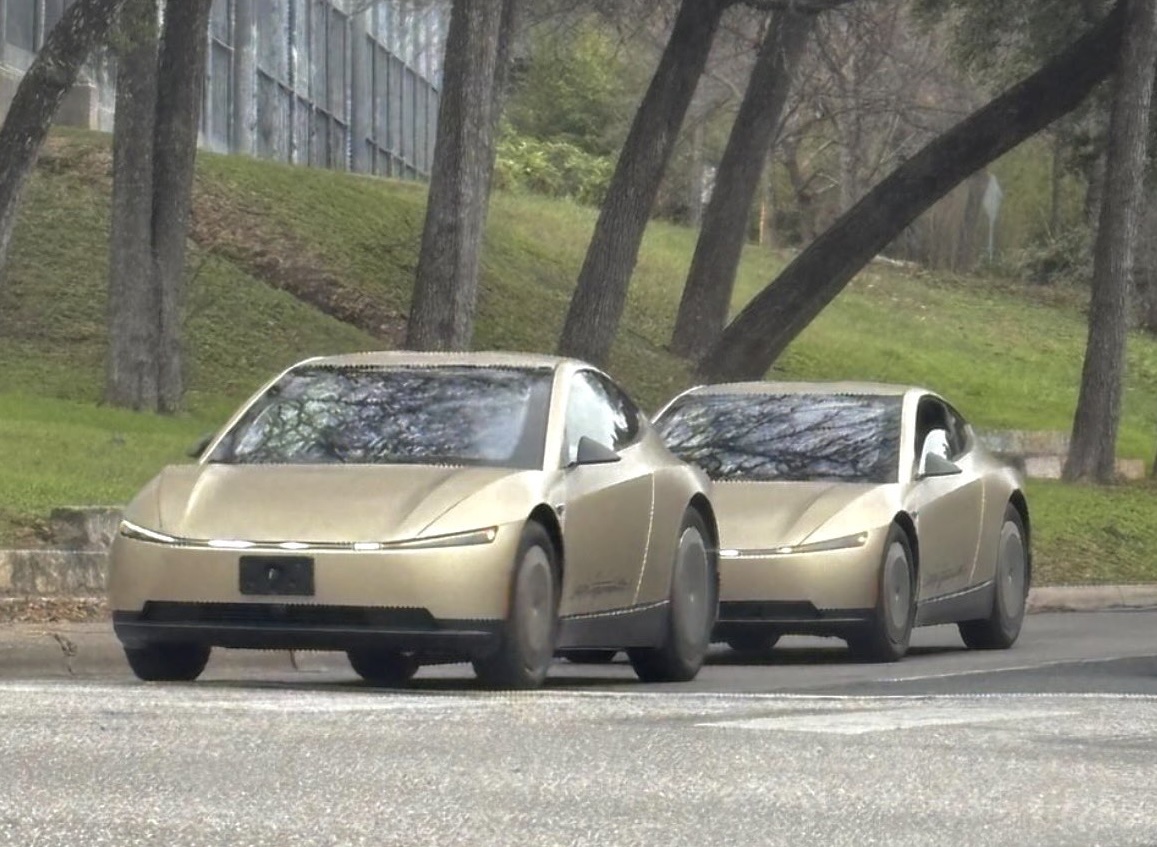

News
Tesla FSD opportunity: China launches smart expressway designed for Level 4 self-driving
The stars seem to be aligning for Tesla FSD Beta’s upcoming rollout in China. Apart from the EV maker’s apparent preparations for the upcoming rollout of FSD Beta to the domestic market, China is also ramping its efforts to prepare its infrastructure for autonomous vehicles.
While Tesla’s FSD Beta program has been around for almost three years in the United States, the initiative is yet to be rolled out in China. Over the past months, however, there have been apparent signs that the advanced driver-assist solution is being prepared for a rollout in the country.
Back in August, a report from Chinese publication 36kr suggested that Tesla was looking to form a local operations team that would be tasked to bring FSD to the domestic market. The report also noted that Tesla would be setting up a data labeling team in China comprised of hundreds of workers. More recently, speculations suggested that FSD Beta would make its debut in Shanghai, Guangzhou, and Shenzhen.
I once discussed the timeline for FSD entering China with senior Tesla executives. Their response was that it would require waiting for the relevant autonomous driving laws and regulations in China to be finalized. Tesla China is also assisting the relevant authorities in…— Tesla China Analyst (@teslashanghai) October 7, 2023
China is already the world’s largest market for electric vehicles. And as per recent reports, it appears that the country is also investing its resources to prepare for the advent of autonomous cars. As per a report from Xinhua News, China recently opened a 56-km (34-mile) smart expressway designed for self-driving vehicles.
?
China inaugurated a 56km express way for Level 4 autonomous driving
"Starting from July 1, the three-month upgrade installed 270 sets of sensing devices, including laser radars, millimeter-wave radars, cameras, and antennas, at 55 locations along the expressway, ensuring a… https://t.co/F1CKhQnf5N— ❤️ Ale?andra Merz (@TeslaBoomerMama) October 16, 2023
The expressway is situated near the city of Suzhou, in the eastern province of Jiangsu, and it features 270 sets of sensing devices, including laser radars, millimeter-wave radars, cameras, and antennas. A 6.5-km (4-mile) section of the expressway is specifically designed for Level 4 autonomous cars, which can perform all driving functions except in certain conditions.
A 56-km smart expressway, designed for level 4 autonomous driving, has started operating as a test section near east China's Suzhou. #China #technology #self-driving pic.twitter.com/6waHGmeWS4— China Xinhua News (@XHNews) October 16, 2023
In a demonstration test, a 49-ton unmanned truck was able to successfully identify obstacles on the road, including moving cars. The vehicle was also able to complete driving behaviors such as ramp entry, lane changes, and overtaking maneuvers. Interestingly enough, such capabilities are present in FSD Beta despite the system still being widely considered as a Level 2 solution.
Don’t hesitate to contact us with news tips. Just send a message to simon@teslarati.com to give us a heads up.

Elon Musk
Elon Musk: Tesla Model Y is world’s best-selling car for 3rd year in a row
The Model Y has now established an impressive streak that would otherwise have been impossible before Tesla.

Elon Musk has announced that the Tesla Model Y has become the world’s best-selling car by volume for the third consecutive year, capping 2025 with another dominant performance.
The Model Y has now established an impressive streak that would otherwise have been impossible before Tesla.
Three years in a row
Musk posted on X: “Tesla Model Y is now officially the world’s best-selling car for the third year in a row!” The CEO’s comment echoed an update that Tesla included in its 2025 recap, which highlighted, among other things, the Model Y’s incredible streak.
The Model Y has held the title since 2023, outperforming traditional leaders like the Toyota RAV4 and Corolla thanks to its bang-for-the-buck nature and its stellar combination of practicality, performance, and tech. The Model Y is also lauded as one of the safest vehicles on the road, making it an ideal choice for families in key markets such as China.
An impressive 2025
The Model Y’s sales feat in 2025 is especially impressive considering the introduction of the vehicle’s new variant. Tesla’s changeover to the new Model Y across its global factories resulted in sales being paused for some time in the first quarter. As per Tesla’s Q1 2025 vehicle delivery and production report, “the changeover of Model Y lines across all four of our factories led to the loss of several weeks of production in Q1.”
This suggests that the Model Y’s sales remained strong in 2025 to the point where it could still claim the title of the world’s best-selling vehicle by volume, even with its sales being throttled during the first quarter of the year. It would then be interesting to see just how far the Model Y can go in 2026, especially considering the rollout of new variants like the six-seat extended wheelbase Model Y L, the affordable Model Y Standard, and the top-tier Model Y Performance.
News
Tesla shares epic 2025 recap video, confirms start of Cybercab production
The cinematic montage, posted by the official Tesla account on X, celebrated the company’s progress in EVs, energy, and Robotaxi development.

Tesla has released an epic year-in-review video for 2025, recapping some of its major achievements from refreshed models to autonomy breakthroughs and production ramps.
The cinematic montage, posted by the official Tesla account on X, celebrated the company’s progress in EVs, energy, and Robotaxi development while looking ahead to an even bigger 2026.
Tesla’s 2025 highlights recap
Tesla has had a busy 2025, as highlighted in the recap video. The video opened with Elon Musk explaining the company’s pursuit of sustainable abundance. A number of milestones were then highlighted, such as the rollout of FSD v14, Optimus’ numerous demos, the opening of the Tesla Diner in Hollywood, LA, the completion of the world’s first autonomous car delivery, and the launch of the Robotaxi network in Austin and the San Francisco Bay Area.
Tesla also highlighted several of its accomplishments over the year. As per the company, the Model Y was the year’s best-selling vehicle globally again, and Teslas became more affordable than ever thanks to the Model 3 and Model Y Standard. Other key models were also rolled out, such as the refreshed Model S and X, as well as the new Model Y, the new Model Y Performance, and the six-seat, extended wheelbase Model Y L.
The Megablock was also unveiled during the year, and the Supercharger Network grew by 18%. Over 1 million Powerwalls were also installed during the year, and the Cybertruck became the first EV truck to get both an IIHS Top Safety Pick+ award and an NHTSA 5-Star safety rating.
Cybercab production confirmed
Interestingly enough, Tesla also confirmed in its 2025 recap video that the production of the Cybercab has started. This bodes well for the vehicle, as it could result in the vehicle really being mass-produced in the first half of 2026. Elon Musk confirmed during the 2025 Annual Shareholder Meeting that Cybercab production should earnestly start around April 2026.
Musk has also noted that the Cybercab will be Tesla’s highest-volume vehicle yet, with the company aiming for an annual production rate of about 2 million units. “If you’ve seen the design of the Cybercab line, it doesn’t look like a normal car manufacturing line,” Musk said earlier this year. “It looks like a really high-speed consumer electronics line. In fact, the line will move so fast that actually people can’t even get close to it.”
News
Tesla Cybercab is changing the look of Austin’s roads, and it’s not even in production yet
Videos and photos showed the sleek, two-seat autonomous vehicles navigating traffic.

Even before entering production, Tesla’s Cybercab is already transforming the appearance of Austin’s streets, with multiple prototypes spotted testing in downtown areas recently.
Videos and photos showed the sleek, two-seat autonomous vehicles navigating traffic. Interestingly enough, the vehicles were equipped with temporary steering wheels and human safety drivers.
Recent Cybercab sightings
Over the weekend, enthusiasts captured footage of two Cybercabs driving together in central Austin, their futuristic silhouettes standing out amid regular traffic. While the vehicles featured temporary steering wheels and side mirrors for now, they retained their futuristic, production-intent exterior design.
Industry watcher Sawyer Merritt shared one of the vehicles’ videos, noting the increasing frequency of the autonomous two-seater’s sightings.
Previewing the autonomous future
Sightings of the Cybercab have been ramping in several key areas across the United States in recent weeks. Sightings include units at Apple’s Visitor Center in California, the Fremont factory test track, and in Austin’s streets.
The increased activity suggests that Tesla is in overdrive, validating the autonomous two-seater ahead of its planned volume production. Elon Musk confirmed at the 2025 Shareholder Meeting that manufacturing begins around April 2026 with ambitious targets, and during an All-Hands meeting earlier this year, Musk hinted that ultimately, Tesla’s factories should be able to produce one Cybercab every 10 seconds.







